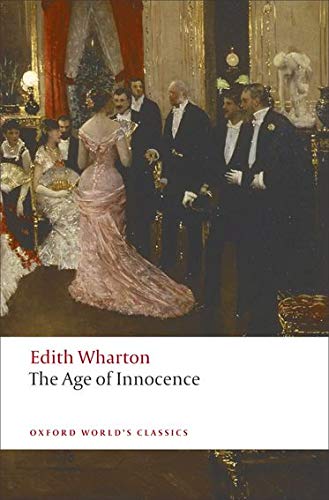I have been aware of the plot of The Age of Innocence for a while. It had infiltrated by osmosis, or perhaps by means of our overly Americanized culture. But I had been unaware that the plot summary I knew had stripped the beauty and refinement away from a truly elegant novel.
Edith Wharton writes about the New York of the 1870s from the perspective of 1920s. The perspective gives her satire an almost anthropological angle. Here’s an example from the opening chapter
“But, in the first place, New York was a metropolis, and perfectly aware that in metropolises it was ‘not the thing’ to arrive early at the opera; and what was or was not ‘the thing’ played a part as important in Newland Archer’s New York as the inscrutable totem terrors that had ruled the destinies of his forefathers thousands of years ago.”
Newland Archer is described as “never appearing in society without a flower (preferably a gardenia) in his buttonhole.” He reminds one a little of the aesthetes described by Oscar Wilde in The Portrait of Dorian Gray.
This beautiful man is torn. His fiancée, May Welland is anything a man could wish for: blonde, innocent, and well-bred New-Yorker. But his happiness is destroyed by the arrival of her cousin, the intriguing Ellen Olenska – a woman estranged from her husband, who is escaping Europe and hoping to find peace in America.
I will say that the classic summary of the novel that I was aware of before even having read the book, favours Newland Archer’s infatuation Ellen Olenska and often portrays May Welland as cold and scheming.
But the joy of the book is that things are far more complex as they seem. Although one does occasionally feel tempted to hit Newland Archer with a stick.
It is the satirical angle of Wharton’s writing that I enjoyed most. In the first half of the novel, the irony is married to the description of New York society, reminding one of a Jane Austen novel.
The second half of the novel is more concerned with emotional intensity, sometimes perhaps bordering on the melodramatic, although even the most intensely dramatic scenes can conceal hidden pearls of humour.
“It was considered vulgar to dress in the newest fashions, and Amy Sillerton has always told me that in Boston the rule was to put away one’s Paris dresses for two years. Old Mrs Baxter Pennilow, who did everything handsomely, used to import twelve a year, two velvet, two satin, two silk, and the other six of poplin and the finest cashmere. It was a standing order, and as she was ill for two years before she died they found forty-eight Worth dresses that she had never been taken out of tissue paper; and when the girls left off their mourning they were able to wear the first lot at the Symphony concerts without looking in advance of fashion.”
The proper way of wearing one’s Parisian dress in Boston seems to be to never wear it all. But you can at least leave it to your descendants…
I definitely want to read more of Edith Wharton’s novels after reading this one.


One thought on “Edith Wharton’s “The Age of Innocence” – book review”